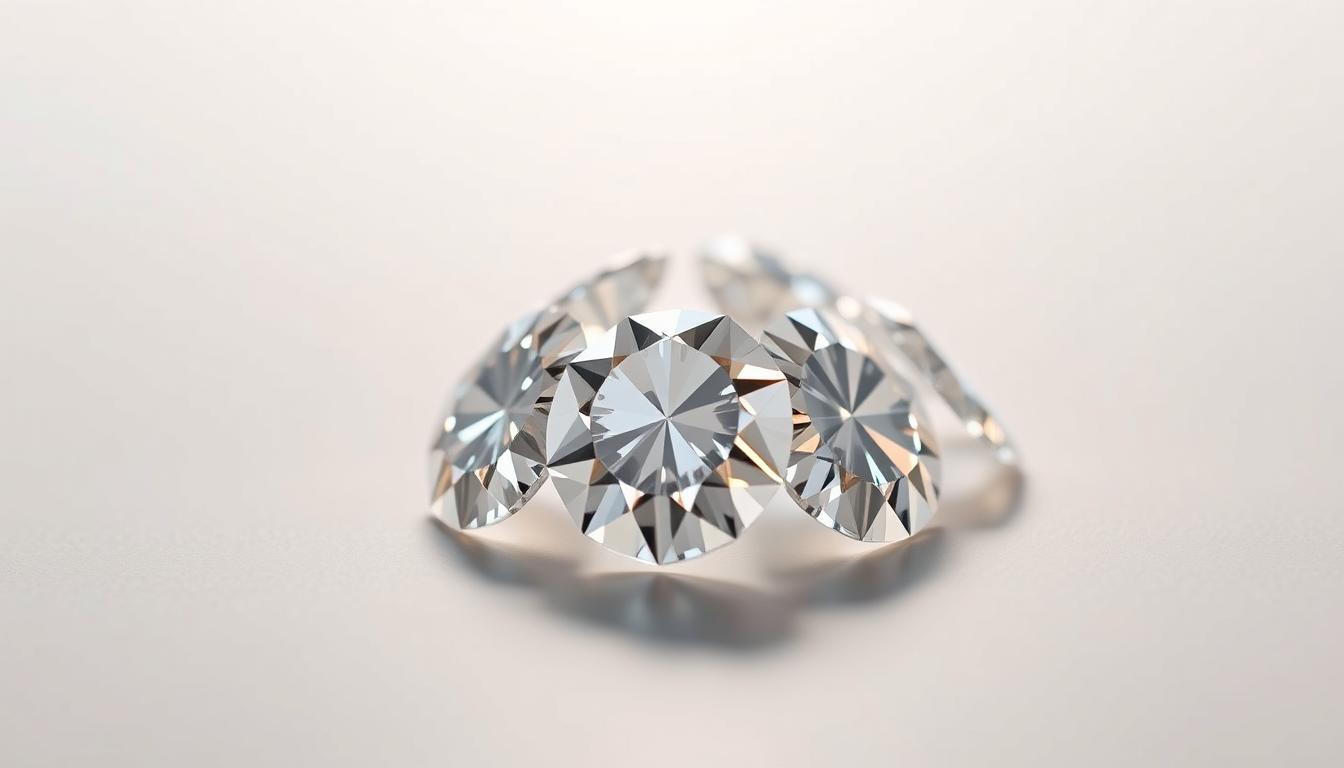The allure of diamonds has captivated hearts for centuries, symbolizing love, commitment, and luxury. In recent years, lab-grown diamonds have emerged as a popular alternative to traditionally mined diamonds, offering the same brilliance and fire at a more accessible price point.
As consumers become more conscious of the environmental and ethical implications of their purchases, the demand for lab-grown diamonds has surged. These diamonds, cultivated using advanced technology that replicates the natural process, boast the same physical, optical, and chemical properties as their earth-mined counterparts.
With numerous companies now offering high-quality lab-grown diamond jewelry, choosing the right one can be daunting. This guide will explore the top-rated companies in the US, highlighting their unique offerings, quality standards, and what sets them apart in the competitive market of ethical jewelry.
Understanding Lab Grown Diamonds
Laboratory-grown diamonds offer a sustainable alternative to traditional diamonds. These diamonds are created using advanced technology that replicates the natural process of diamond formation.
What Are Lab Grown Diamonds?
Lab-grown diamonds are gem-quality diamonds produced by either the High Pressure High Temperature (HPHT) or Chemical Vapor Deposition (CVD) methods. Both processes start with a small diamond seed that serves as the foundation for the growing crystal structure.
The Science Behind Creating Diamonds in Labs
The HPHT method subjects carbon to extreme temperature and pressure conditions, mimicking the natural formation process. CVD involves introducing carbon-rich gas into a chamber where carbon atoms bond to a diamond seed crystal, gradually building a diamond structure.
Lab Grown vs. Natural Diamonds: Key Differences
When considering diamond options, understanding the differences between lab-grown and natural diamonds is crucial. The primary distinctions lie in their origin, formation process, and price.
Origin and Formation Process
Lab-grown diamonds are created using advanced technology that replicates the natural process of diamond formation, whereas natural diamonds are mined from the earth after being formed over millions of years. Lab-grown diamonds have fewer inclusions and imperfections due to the controlled environment in which they are created.
Price Comparison and Value
According to Jean Dousset, a lab-grown diamond designer, “Lab diamonds break down the barrier which makes them truly an irresistible option.” Key points to consider include:
- Lab-grown diamonds cost 30-40% less than comparable mined diamonds.
- This price difference allows consumers to purchase larger, higher-quality diamonds within the same budget.
- The value proposition of lab diamonds appeals to practical consumers.
“Lab diamonds remove the tension that mined diamonds present with the financial commitment and quality compromises many will end up making when considering a purchase.”
The significant price difference makes lab-grown diamonds an attractive option for those looking for value without compromising on quality.
Are Lab Grown Diamonds Real?
The question on everyone’s mind is: are lab-grown diamonds real? Lab-grown diamonds, also known as laboratory-grown diamonds, are indeed real diamonds, possessing the same physical, chemical, and optical properties as their natural counterparts.
To understand their authenticity, it’s essential to look at the certification and grading standards. Reputable organizations such as the Gemological Institute of America (GIA) and the International Gemological Institute (IGI) grade lab-grown diamonds based on the 4Cs: carat, color, clarity, and cut.
Certification and Grading Standards
Lab-grown diamonds are certified using the same standards as natural diamonds. This involves a rigorous evaluation process to determine their quality and characteristics.
Production Methods: HPHT and CVD
Gem-quality laboratory-grown diamonds are produced by either the high pressure, high temperature (HPHT) or chemical vapor deposition (CVD) methods. The HPHT method subjects carbon to extreme temperature and pressure, mimicking natural diamond formation. In contrast, CVD uses a lower pressure environment where carbon atoms are deposited onto a diamond seed.
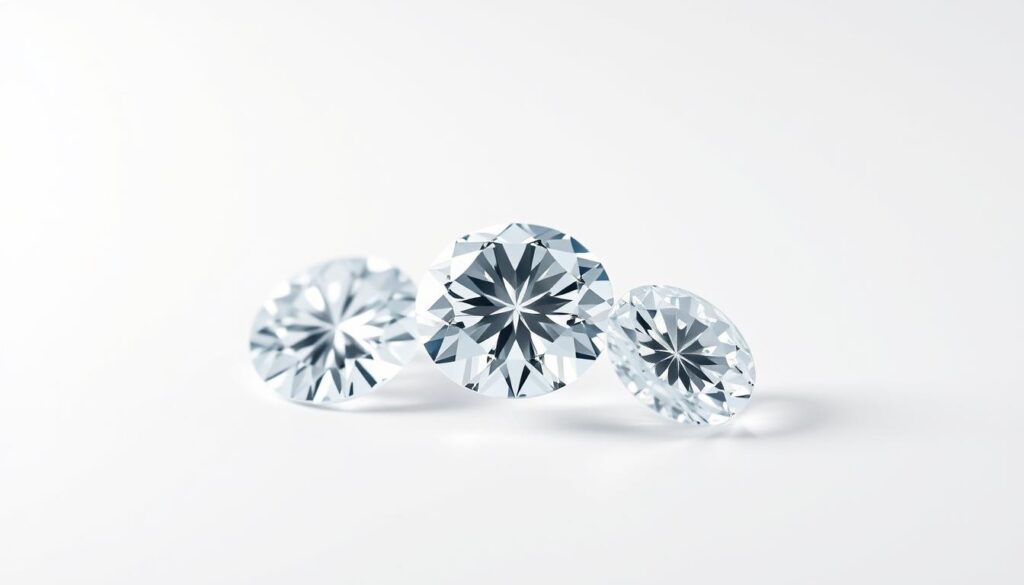
Both production methods result in genuine lab diamonds, with the CVD process offering a more controlled environment for diamond growth. Advances in these technologies have significantly improved the quality and size of lab-grown diamonds over the past decade.
Why Lab Grown Diamonds Are Gaining Popularity
Lab-grown diamonds are gaining traction due to their unique blend of technological innovation and sustainability. This shift is largely driven by changing consumer values and preferences.
Environmental and Ethical Considerations
Consumers are increasingly drawn to lab-grown diamonds because they offer a more environmentally friendly and ethical alternative to traditional diamonds. The production process for lab-grown diamonds has a significantly lower environmental impact and eliminates concerns related to conflict diamonds.
Appeal to Younger Generations
Younger generations, particularly millennials and Gen Z, are driving the demand for lab-grown diamonds. They appreciate the technological innovation behind these diamonds and value their sustainability and affordability. Social media has also played a crucial role in normalizing lab-grown diamonds among younger demographics.
How to Evaluate Quality in Lab Grown Diamonds
To ensure you’re getting a high-quality laboratory-grown diamond, it’s vital to know what to look for. Evaluating the quality of these diamonds involves understanding several key factors that contribute to their overall value and appearance.
The 4Cs for Lab Diamonds
The 4Cs – cut, color, clarity, and carat – are fundamental in assessing the quality of lab-grown diamonds. Just like natural diamonds, the 4Cs provide a standardized way to evaluate the characteristics of lab-grown diamonds, helping consumers make informed decisions.
Questions to Ask Before Purchasing
According to said d’haenens-johansson, when evaluating lab-grown diamonds, consumers should ask several important questions. These include inquiring about the specific growth method used, such as HPHT or CVD, and checking the certification provided by a reputable gemological laboratory. Additionally, understanding the energy sources used in production and whether the diamond has undergone any post-growth treatments can be crucial. It’s also essential to review the company’s return policy and warranty before making a purchase decision.
By asking the right questions and understanding the 4Cs, consumers can confidently evaluate the quality of diamonds and make a well-informed purchase.
Best Lab Grown Diamond Companies for Engagement Rings
For those seeking lab-grown diamond engagement rings, several top-rated companies are worth considering. These companies offer high-quality diamonds and exceptional service.
James Allen
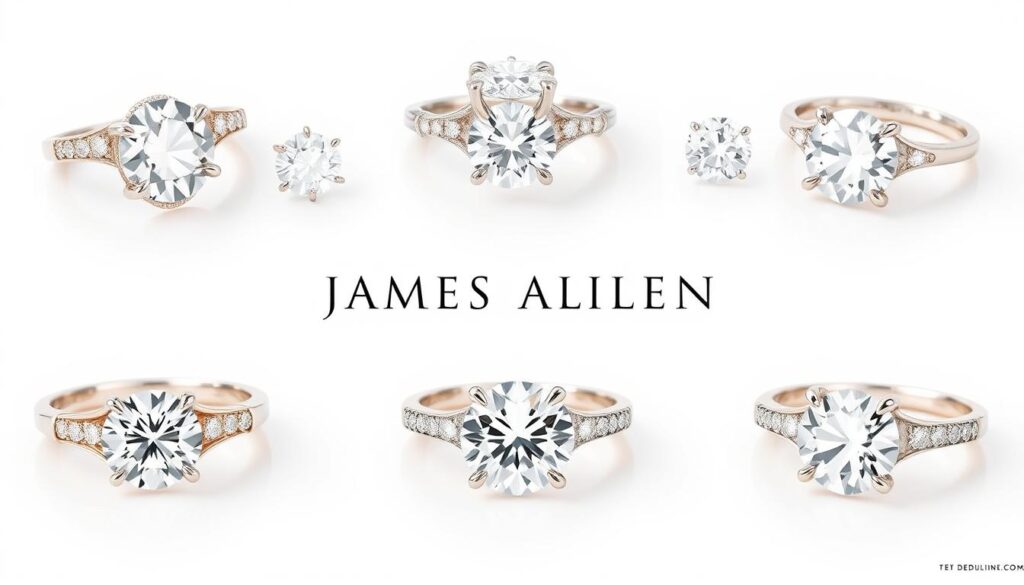
James Allen is known for its extensive range of lab-grown diamond engagement rings, offering advanced technology like 360-degree views to help customers make informed decisions.
Blue Nile
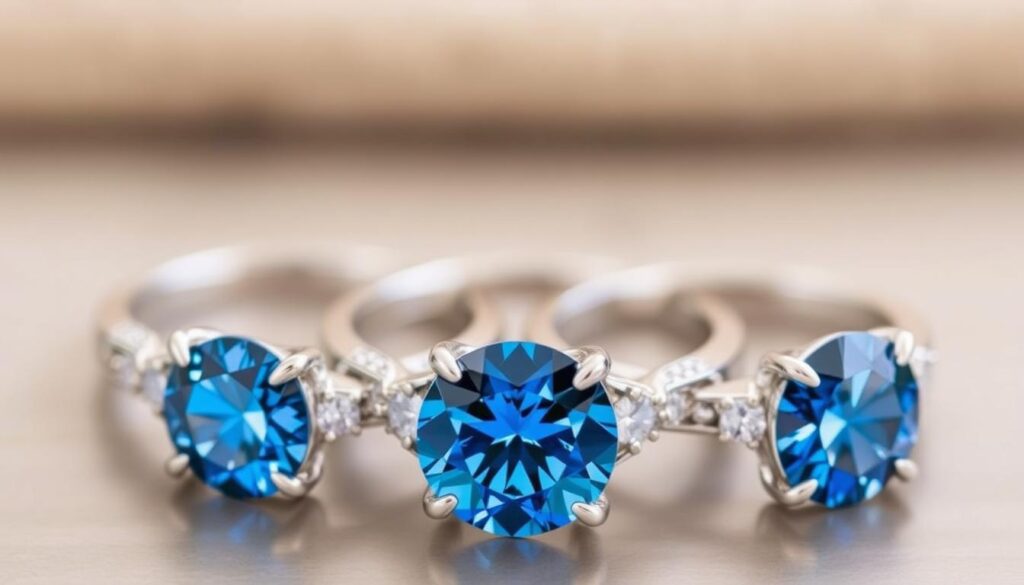
Blue Nile provides a wide selection of lab-grown diamond engagement rings, with a focus on quality and customer education, including detailed diamond reports.
Brilliant Earth
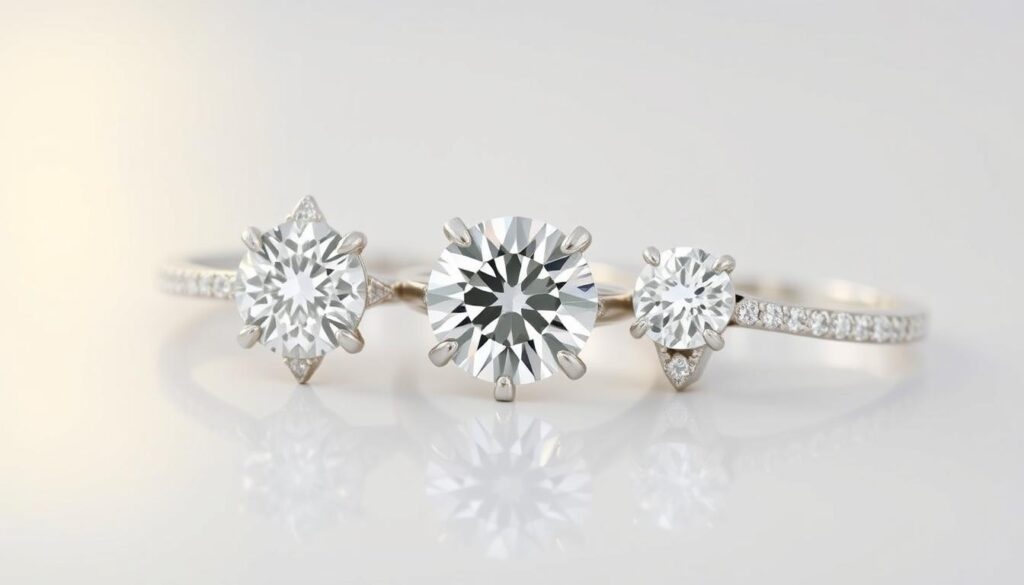
Brilliant Earth stands out for its commitment to ethical and environmentally responsible practices. Their lab-grown diamonds are certified by leading gemological laboratories and come with a lifetime warranty. They offer a vast selection of engagement ring settings, including vintage-inspired and modern designs, and provide virtual appointment services for customer convenience.
Top Brands for Unique Engagement Ring Designs
Unique engagement ring designs are now more accessible than ever, thanks to top brands specializing in lab-grown diamonds. These brands offer a range of innovative and stylish options for couples looking for something special.
Pandora’s Lab Grown Collection
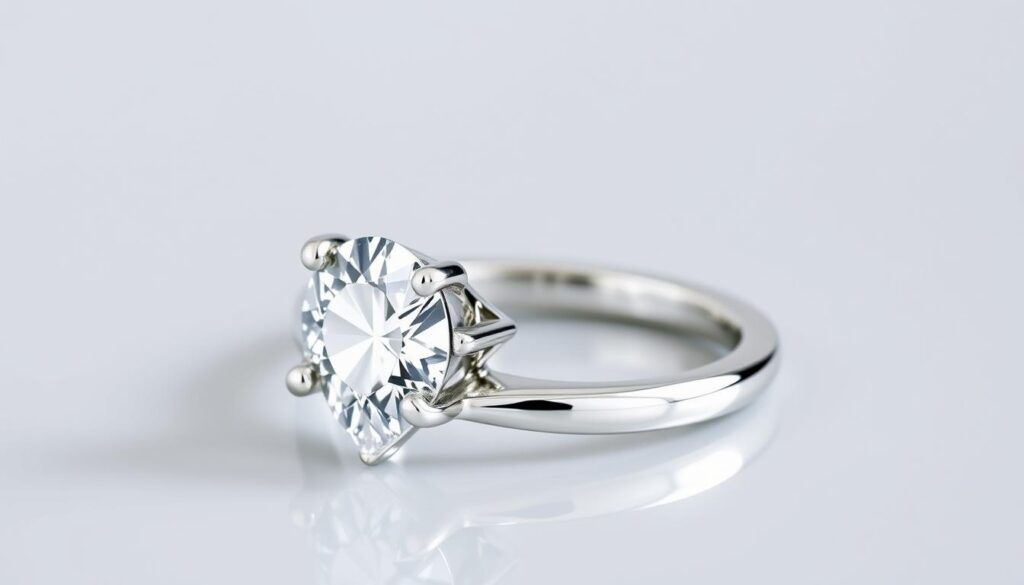
Pandora’s lab-grown collection features stunning designs that are both elegant and contemporary. Their use of lab-grown diamonds ensures a sustainable and ethical choice for couples.
Jean Dousset’s Signature Styles
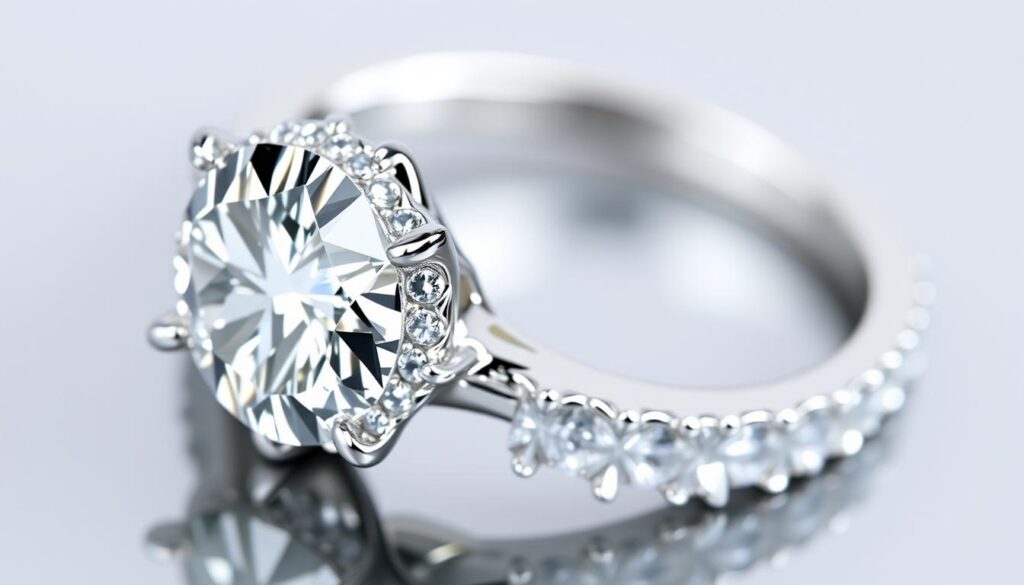
Jean Dousset is renowned for its unique and intricate designs, making each engagement ring a masterpiece. Their lab-grown diamond rings offer a blend of tradition and innovation.
Brilliant Earth’s Coiled Pavé Designs
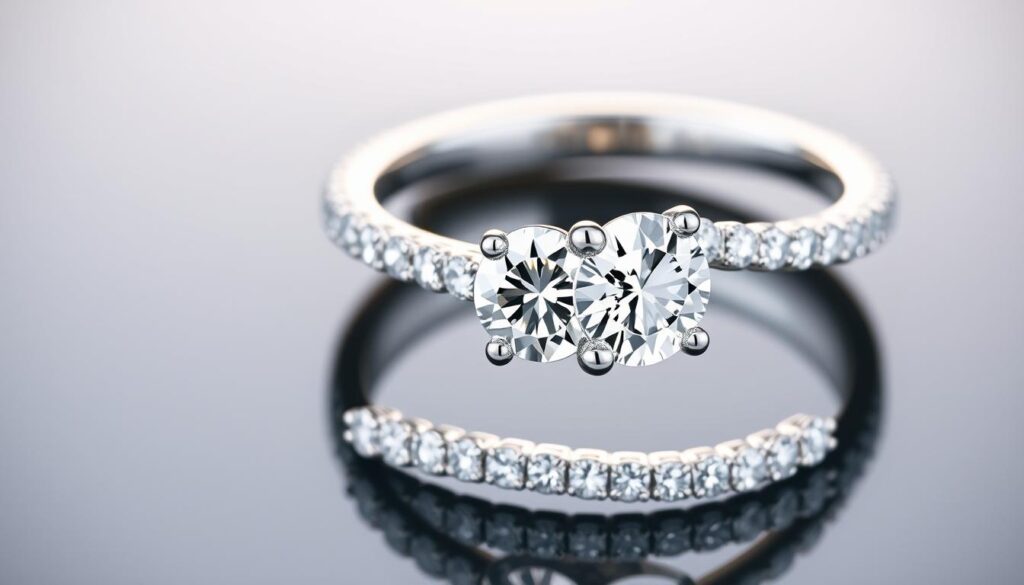
Brilliant Earth’s coiled pavé designs feature innovative spiral patterns of small diamonds that wrap around the band, creating a distinctive effect. Available in multiple metals, including white gold, these designs maximize sparkle and offer excellent value.
Best Companies for Lab Grown Diamond Earrings
Elegant and sustainable, lab grown diamond earrings are available from several renowned companies. These businesses offer a range of styles and designs that cater to different tastes and preferences.
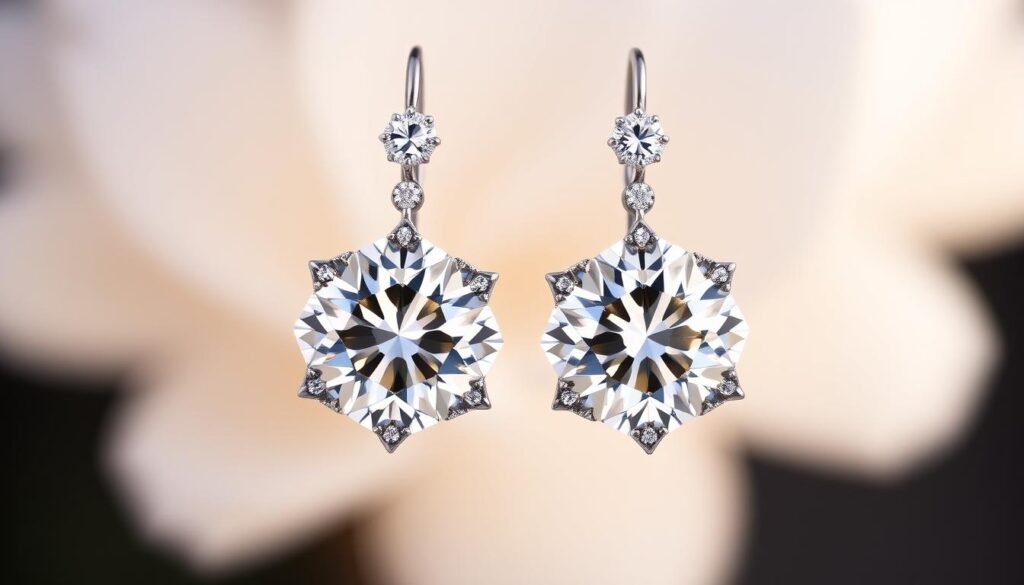
Blue Nile’s Classic Studs
Blue Nile offers high-quality lab grown diamond stud earrings that are ideal for everyday wear. Their classic designs are both timeless and elegant.
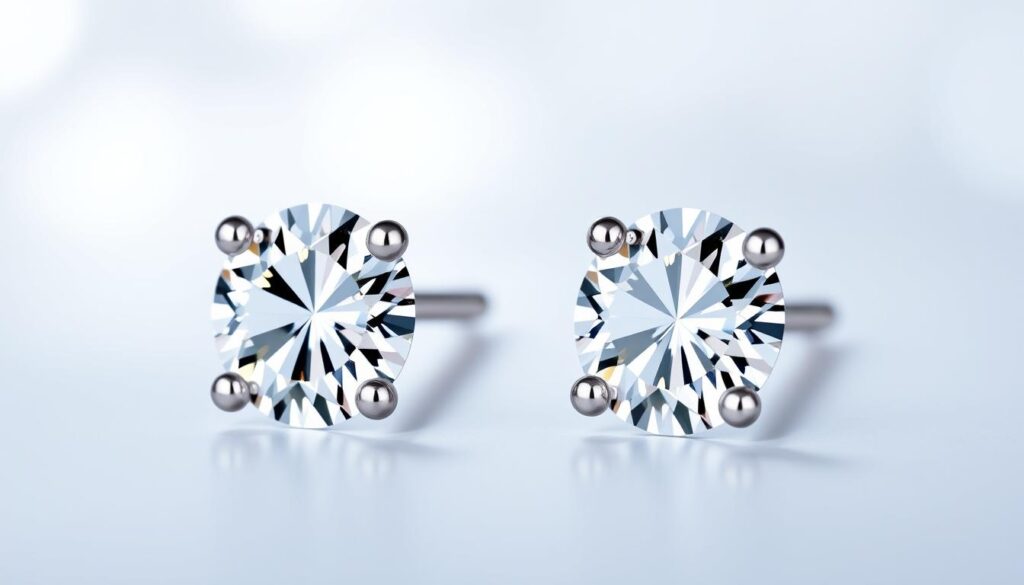
Pandora’s Sterling Silver Collection
Pandora’s sterling silver collection features beautiful lab grown diamond earrings that are perfect for those who appreciate understated elegance. The use of sterling silver adds a touch of sophistication.
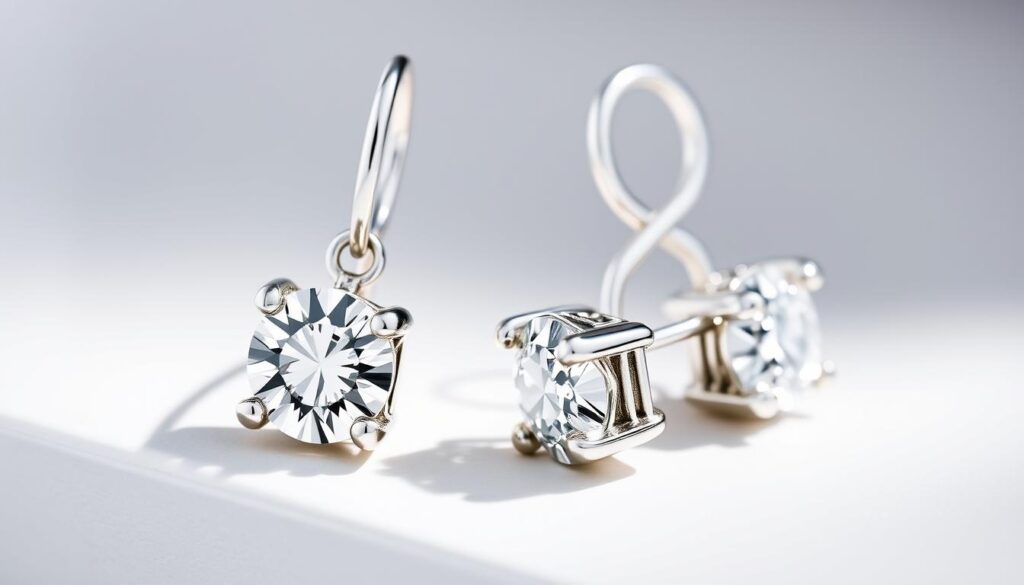
Etsy’s Customizable Options
Etsy stands out for its customizable lab grown diamond earrings, offering a wide range of styles from classic to contemporary. Sellers on the platform provide various personalization options, including custom settings and metal finishes.
- Etsy offers a marketplace of independent jewelers creating customizable lab-grown diamond stud earrings.
- Customers can select from multiple metal options to suit their preferences and budget.
- Many Etsy sellers provide personalization options for lab-grown diamond earrings.
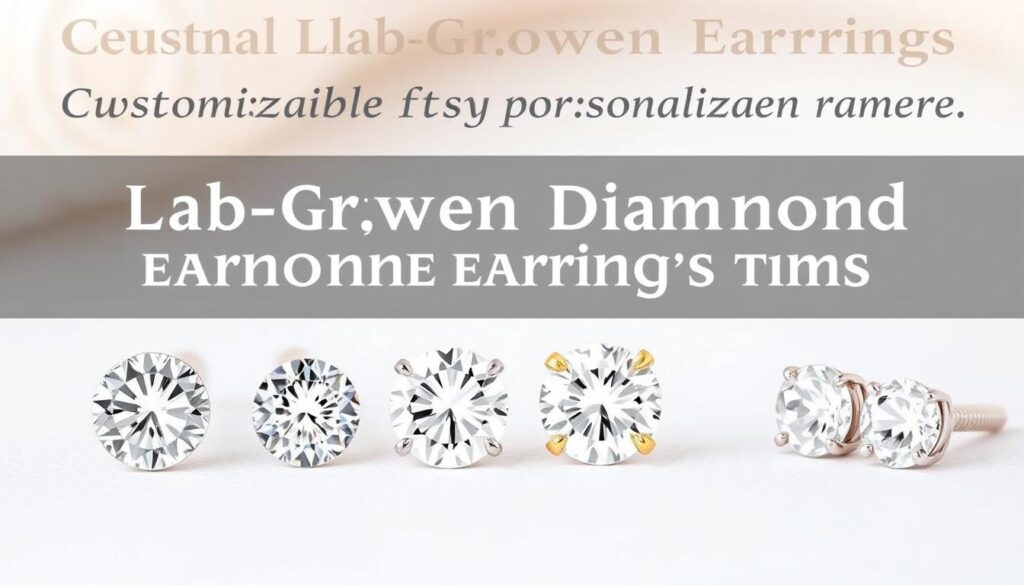
Leading Lab Grown Diamond Necklace Providers
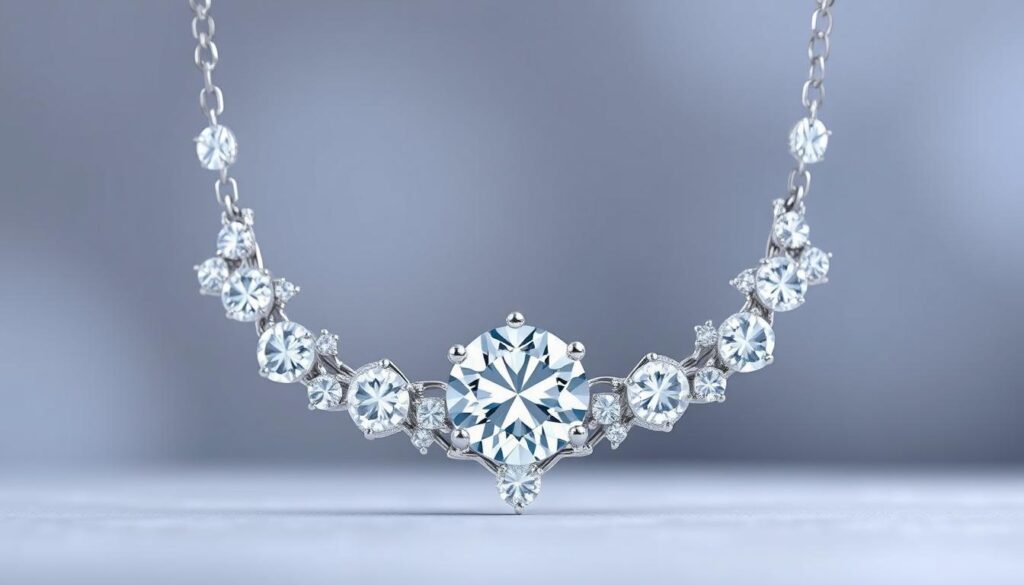
For those seeking exquisite lab-grown diamond necklaces, several top brands stand out. These companies offer a range of stunning designs that cater to different tastes and preferences.
Jean Dousset’s Everyday Essentials
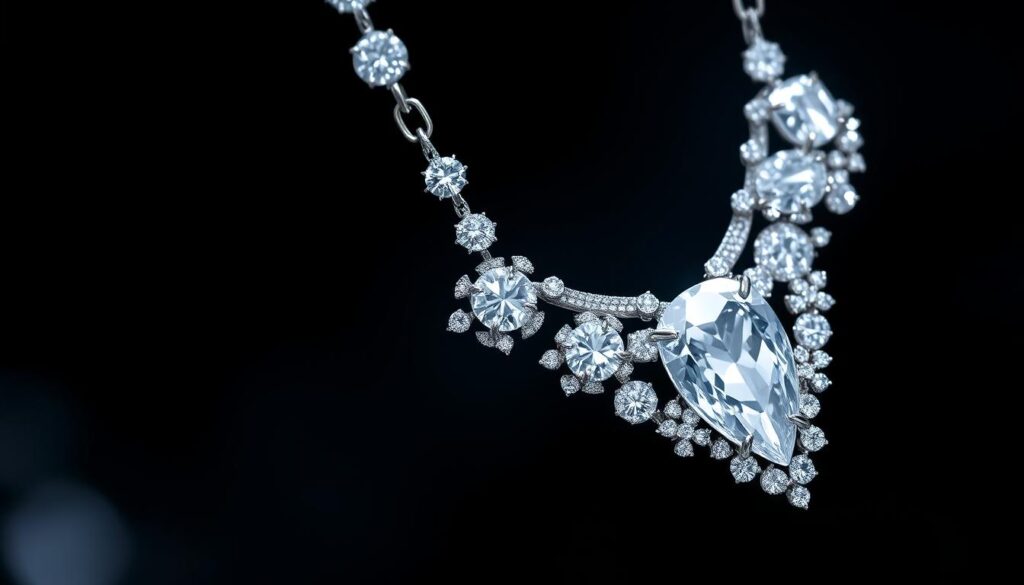
Jean Dousset’s Everyday Essentials collection features elegant and versatile lab-grown diamond necklaces. Their designs are perfect for everyday wear while still being special enough for significant occasions.
Kay Jewelers’ Statement Pieces

Kay Jewelers offers statement pieces that showcase the beauty of lab-grown diamonds. Their necklaces are available in various styles, including white gold and yellow gold, to complement different skin tones and personal preferences.
Brilliant Earth’s Versatile Designs
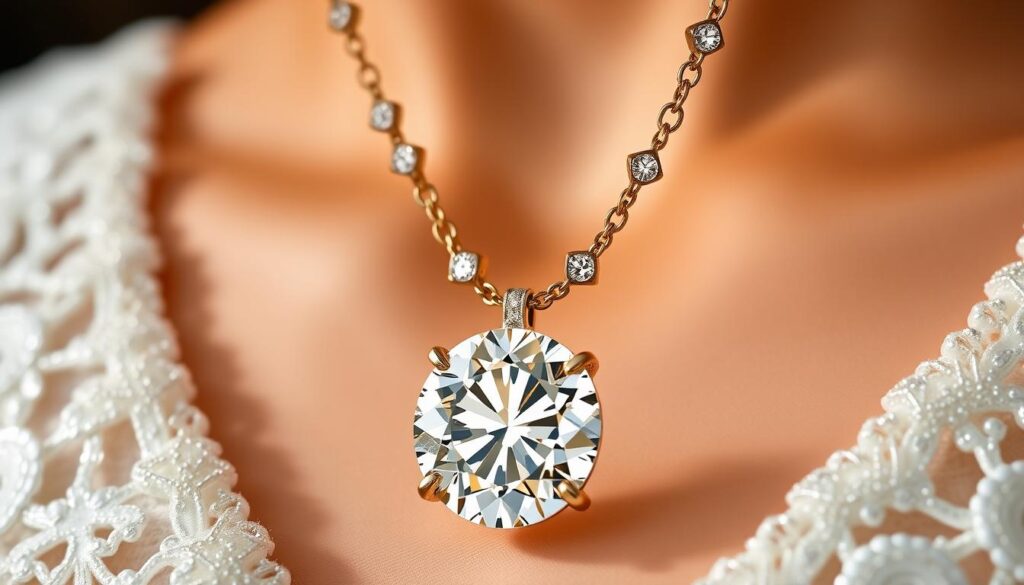
Brilliant Earth’s lab-grown diamond necklaces feature adjustable chains and timeless solitaire designs. Available in both white gold and yellow gold, these necklaces are designed with sustainability in mind, using recycled precious metals alongside lab-created diamonds.
Top Choices for Lab Grown Diamond Bracelets
For those seeking the perfect blend of luxury and everyday wearability, lab-grown diamond bracelets are an excellent choice. These elegant accessories offer a sophisticated touch to any outfit while promoting sustainability.
Pandora’s Adjustable Styles
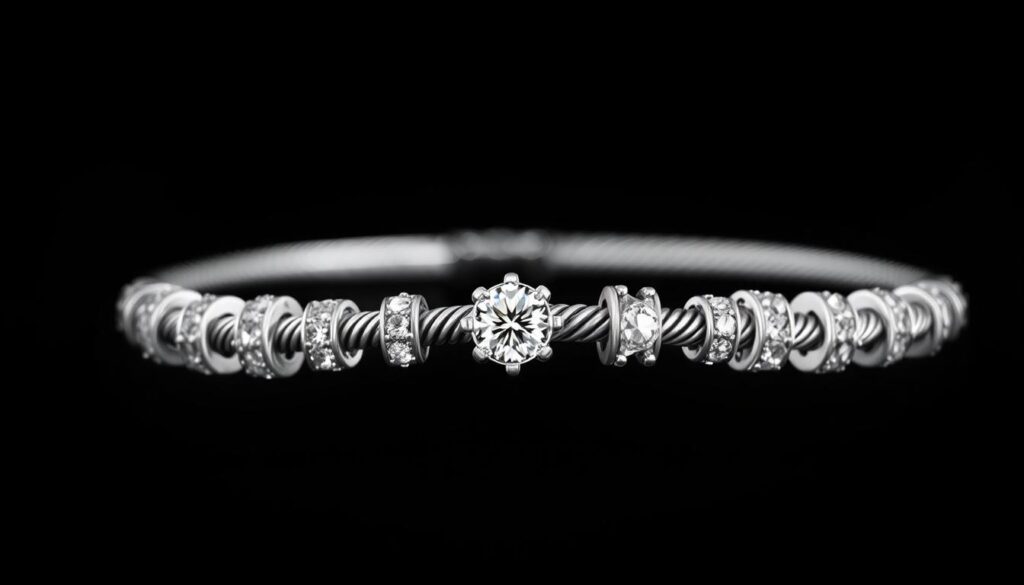
Pandora’s lab-grown diamond bracelets feature adjustable designs, allowing for a customizable fit. Their sleek and modern aesthetic makes them suitable for both casual and formal occasions.
Blue Nile’s Classic Tennis Bracelets
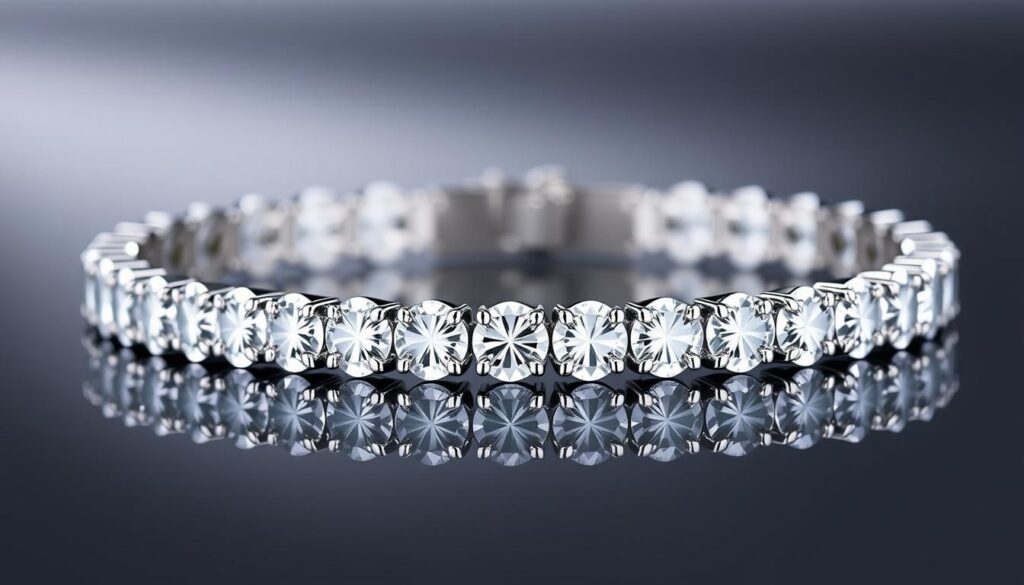
Blue Nile’s classic tennis bracelets are crafted with precision, featuring round brilliant lab-grown diamonds that exude timeless elegance.
Jean Dousset’s Everyday Luxury
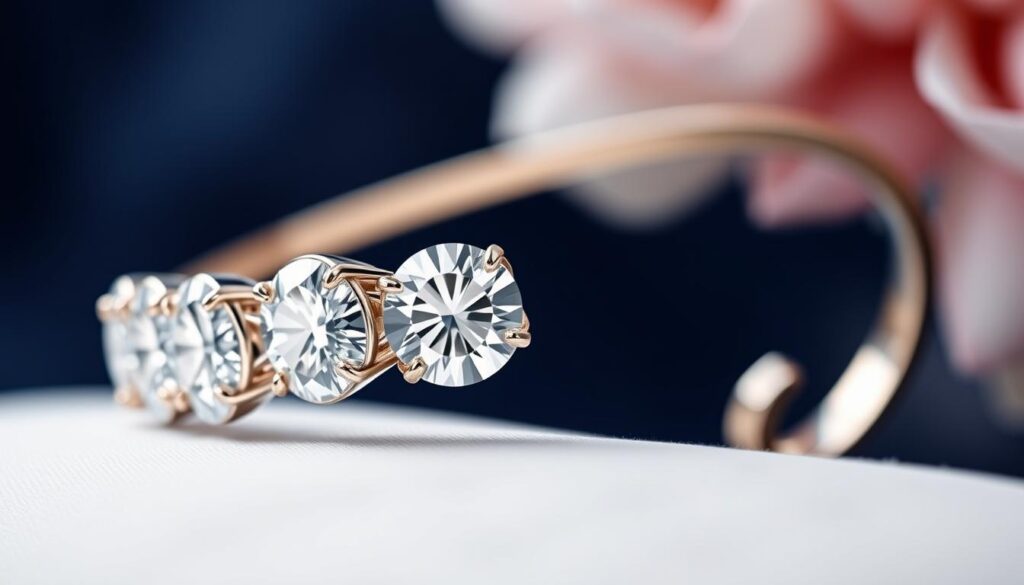
Jean Dousset’s everyday luxury bracelets showcase seven round brilliant lab-grown diamonds bezel-set along a signature chain, creating a modern and sophisticated look. The bezel setting provides extra security for the diamonds while maintaining a sleek, contemporary aesthetic.
Price Ranges for Lab Grown Diamond Jewelry
The market for lab-grown diamond jewelry is expanding, with various price points available. This allows consumers to choose pieces that fit their budget and style.
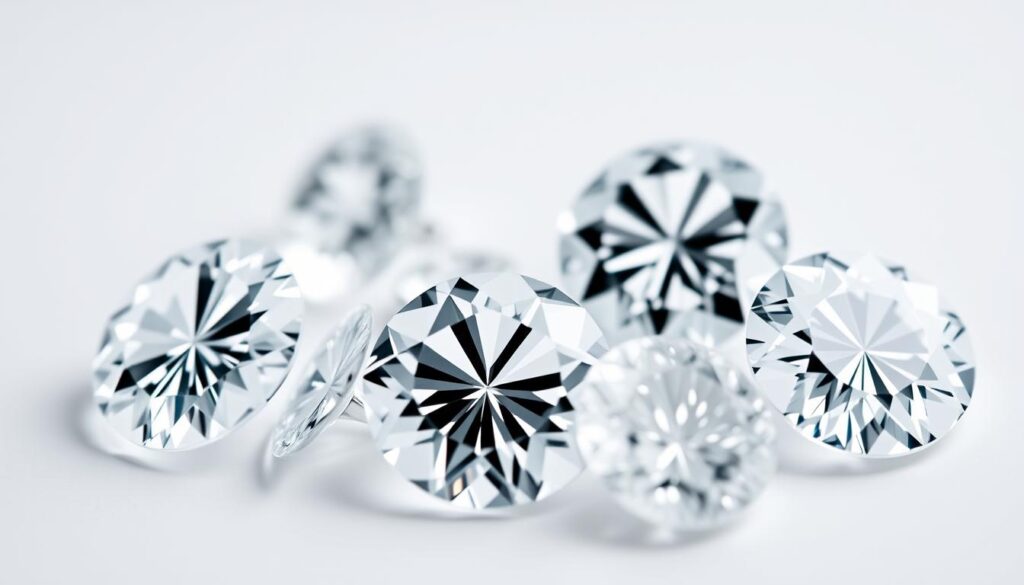
Affordable Options
For those looking for entry-level lab-grown diamond jewelry, prices can start as low as a few hundred dollars. Simple stud earrings or small pendant necklaces featuring lab-grown diamonds can be found in this range. These pieces are perfect for everyday wear and make great gifts.
Luxury Lab Grown Pieces
For those seeking high-end lab-grown diamond jewelry, prices can range into the thousands. Here are some examples of luxury pieces and their typical price ranges:
- Luxury lab-grown diamond engagement rings with center stones of 1.5+ carats in designer settings: $3,000-$10,000
- High-end tennis bracelets featuring 3-5 total carats of lab-grown diamonds: $2,500-$7,000
- Statement necklaces with multiple lab-grown diamonds: $1,500-$5,000
- Designer earrings featuring larger lab-grown diamonds (1+ carat each): $1,200-$4,000
- Custom-designed luxury pieces with exceptional lab-grown diamonds: exceeding $15,000
These luxury pieces showcase the beauty and versatility of lab-grown diamonds, offering unique and sophisticated designs that cater to discerning tastes.
How to Care for Lab Grown Diamond Jewelry
To keep your lab-grown diamond jewelry shining, it’s essential to understand the proper care and maintenance techniques. Lab-grown diamonds, just like their natural counterparts, require attention to detail to maintain their brilliance and fire.
Cleaning and Maintenance Tips
Regular cleaning is vital to maintaining the sparkle of your lab-grown diamond jewelry. Use a soft-bristled toothbrush and mild soap to gently scrub away dirt and grime. Avoid using harsh chemicals or abrasive materials that can damage the metal or harm the diamond.
- Gently scrub the diamond jewelry with a soft-bristled toothbrush.
- Use mild soap and warm water for cleaning.
- Rinse thoroughly to remove any soap residue.
Storage Recommendations
Proper storage is crucial to preventing damage to your lab-grown diamond jewelry. Store each piece separately in a fabric-lined compartment or pouch to prevent scratching. Consider using a jewelry box with individual compartments designed for rings, necklaces, and bracelets.
- Store lab-grown diamond jewelry in individual fabric-lined compartments.
- Keep diamond jewelry away from other gemstones to prevent scratching.
- Use a jewelry box with separate compartments for different types of jewelry.
By following these simple care and maintenance tips, you can ensure that your lab-grown diamond jewelry remains in excellent condition, maintaining its quality and brilliance for years to come.
Shopping Tips for Lab Grown Diamonds
To make an informed decision when buying lab-grown diamonds, consider the following tips. Shopping for diamonds can be a daunting task, but being aware of certain factors can make it easier.
Questions to Ask Retailers
When purchasing lab-grown diamonds, it’s essential to ask the right questions. Some key inquiries include:
- What is the certification process for your diamonds?
- Can you explain your production methods and sourcing practices?
- How do you determine the price of your lab-grown diamonds?
Red Flags to Watch For
Be cautious of retailers who:
- Sell lab-grown diamonds without proper certification from recognized gemological laboratories.
- Offer prices that seem too good to be true compared to market standards.
- Make exaggerated claims about the investment value or appreciation potential of diamonds.
The Future of Lab Grown Diamond Industry
As the demand for sustainable and affordable diamond options continues to rise, the lab-grown diamond industry is poised for significant growth. This growth is driven by various factors, including advancements in technology and shifting consumer preferences.
Technological Advancements
The lab-grown diamond industry is witnessing significant technological advancements, particularly in production methods such as HPHT and CVD. These advancements are improving the quality and affordability of lab-grown diamonds, making them more competitive in the market.
Market Growth Predictions
Industry analysts predict that the lab-grown diamond market will continue to expand at a compound annual growth rate of 7-9% through 2028. Mainstream jewelry retailers are increasingly incorporating lab-grown diamonds into their offerings, signaling broader market acceptance. As consumer awareness and acceptance of lab diamonds increase, particularly among younger demographics concerned with sustainability, the market is expected to grow further.
Price points are projected to stabilize as production efficiency improves and market competition increases. In terms of market share, lab-grown diamonds are expected to represent 10-15% of the global diamond jewelry market within the next five years.
Customization Options for Lab Grown Diamond Jewelry
Customization is at the forefront of lab-grown diamond jewelry, providing an array of choices to suit every style and story. This personalization aspect is a significant draw for consumers looking to make their jewelry truly unique.
Design Your Own Pieces
Many companies now offer the ability to design your own lab-grown diamond jewelry, allowing customers to select the diamond, setting, and metal type to create a one-of-a-kind piece. This bespoke service is particularly popular for engagement rings, where the personal touch can make the ring even more special.
Personalization Services
Personalization services for lab-grown diamond jewelry include a range of options. Customers can opt for custom engraving of meaningful dates, names, or messages inside rings or on pendants. Some companies also offer birthstone accents that can be added alongside lab-grown diamonds to create truly personalized pieces.
- Specialized settings can be created to incorporate heirloom diamonds or gemstones alongside new lab-grown diamonds, adding a touch of family history to the piece.
- Custom metal alloys or mixed metal designs provide additional ways to personalize engagement rings and other fine jewelry, catering to individual tastes.
- Bespoke packaging and presentation options add an extra layer of personalization to the gift-giving experience, making the purchase feel even more special.
By offering such a wide range of customization options, lab-grown diamond jewelry companies are able to cater to a diverse range of consumers, each with their own unique preferences and stories.
Conclusion
Ultimately, the best lab grown diamond companies offer a brilliant alternative to traditional mined diamonds. They provide exceptional quality, value, and ethical sourcing practices that appeal to modern consumers.
Companies like James Allen, Blue Nile, and Brilliant Earth lead the industry with innovative designs and a commitment to quality, making lab-grown diamonds a popular choice for engagement rings and everyday jewelry.
